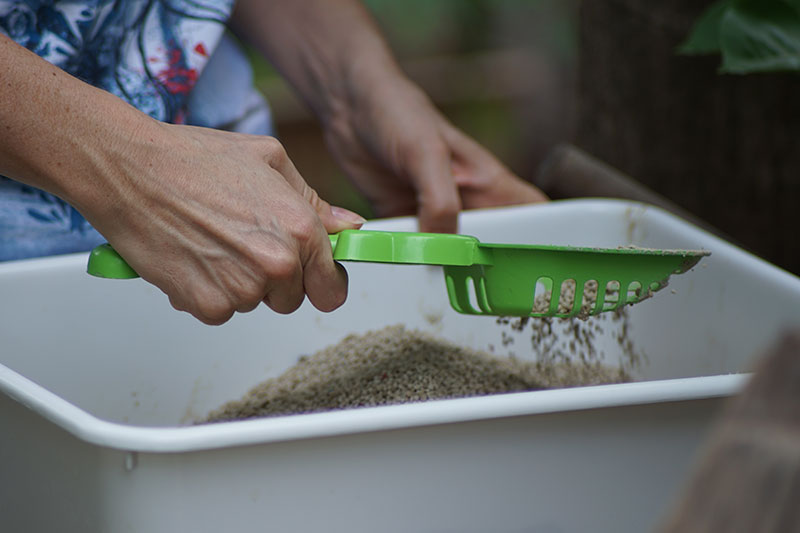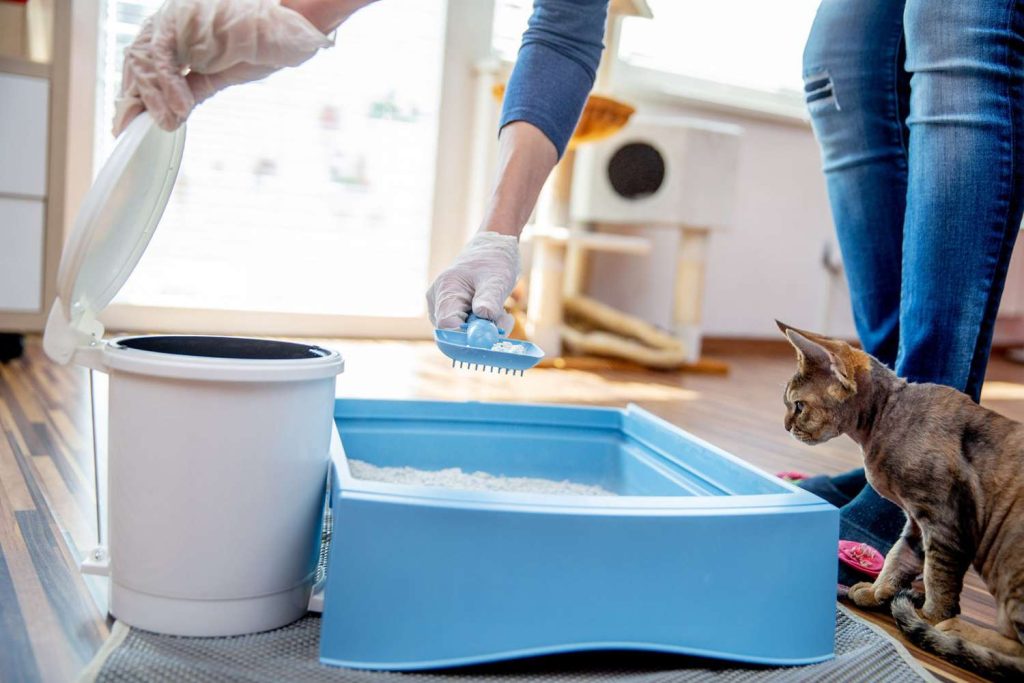If the weather is bad outside, owners of velvet paws enjoy a significant advantage: unlike the owners of dogs, they don’t have to go for a walk in all weathers. Domestic cats go about their business discreetly in their own litter box in the apartment. However: This practical hygiene facility for house tigers requires careful cleaning. With the right technique you will quickly become a pro. You’ll be surprised at how easy it is to clean the litter box.
Table of Contents
How often should I clean the litter box?
Did you know that an adult cat visits the litter box about seven times a day? Of course, frequency will vary depending on individual habits and feeding habits, but on average, cats urinate five times a day and defecate twice a day.
If there are several cats in the house, the daily amount of cat excrement increases accordingly. Since the digestive products of the carnivore cat and the concentrated urine give off a very distinctive odor, it is also in your own interest to ensure that the litter box is always clean. Above all, the house cat does not feel comfortable with a dirty toilet. The animal may then prefer to move to other places in the house to relieve itself. It could hit potted plants, sofas or carpets.
If every cat has its own “little place”, clean the litter box at least once, preferably twice a day. If a larger flock of cats shares the toilet – which is not optimal – you absolutely have to clean up the excretions several times a day. Depending on the type of cat litter and how full it is, a complete cleaning is required every one to two weeks. More on that below.

What do I need to clean the litter box?
As basic equipment, in addition to the litter box itself, you need a special cat litter scoop, the scoop blade of which has a lattice structure.
The legacies are packaged hygienically and odor-proof in special cat waste bags, and cat litter buckets have proven useful for temporary storage. The cat droppings can be stowed in it until the next trip to the garbage can.
For your personal work hygiene, you can have household gloves and a respirator ready. The latter is recommended for cat litter with a certain amount of dust.
Cleaning the litter box: how to do it step by step
You have the cat litter scoop at hand and the garbage bag within reach? Then you can start cleaning the litter box.
- Lift the litter box hood (if equipped) and use the shovel to dig up the litter. If you come across feces, sieve it out.
- Depending on the litter, there are shaped balls of urine in the toilet, which can also be recorded.
- Once all of the solid excrement has been removed from the tub, use the shovel to stir up the remaining cat litter.
- Finally, refill the level with fresh cat litter. If you’re not sure what amount is ideal, you’ll find the answers here . However, it is important that the filling level does not fluctuate significantly – that could irritate the velvet paw.
You should give the litter box a thorough clean every week or two. This means that you completely replace the litter. It is a good idea to take this opportunity to wash and disinfect the plastic tub as well.
- Pour the entire contents of the litter box into a garbage bag.
- Then rinse the tub with warm water and use a sponge to remove any crusted residue.
- There is nothing wrong with using a mild neutral cleaner; However, make sure that cleaning agents do not attack the plastic and do not leave behind any obtrusive scents. Citrus smells or even ammonia can be particularly irritating for cats.
- Let the tub dry out. Make sure there is no moisture left in it before adding new bedding, as contact with water will render it unusable.
Your purring roommate will have nothing to complain about in such a well-kept toilet.

Why is the litter box smelly?
Despite all the cleanliness, it can happen that the litter box smells unpleasant. What do you do in this case – and where does the litter box smell come from?
Cat urine and feces do not smell particularly pleasant per se. In addition, some cats spread a very individual “note”. The high-tech solution is a closed litter box in which an activated carbon filter binds the odor particles. But even a normal hood can hold back a large part of the odors. However, not every cat likes closed litter boxes.
Unpleasant odors can arise more if you use clay granules as litter, as these do not bind fragrances quite as effectively. The remedy is ordinary baking soda, sprinkled on the bottom of the litter box before adding litter. Some “odor stoppers” for litter boxes promise a comparable effect, but an additional disinfecting effect. However, it is possible that a sensitive velvet paw literally “cannot smell” these cleaning agents and boycotts the toilet as a result.
To remove the litter box smell from the air, or at least to cover it up, you can set up air fresheners; but also avoid citrus scents here.
How should I dispose of an old litter box?
Sooner or later a litter box has had its day or needs to be replaced by a new model and the question of proper disposal arises. If the part is basically still in usable condition and not damaged, some animal protection organizations or animal boards will gladly accept it as a donation in kind, or an interested party will be found through a classified ad. However, if the litter box is broken or badly worn, it belongs in the bulky or residual waste. Unfortunately, the plastic is not a recyclable material.